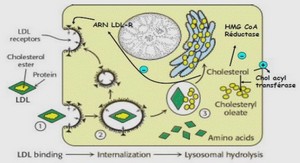Miocene Shark and Batoid Fauna from Nosy Makamby
Geology and Age
Nosy Makamby (= Mahakamby) is a small (~1.6 km x 0.4 km) island SSW-NNE aligned offshore at broad of the delta of Mahavavy River, in northwest Madagascar, approximately 50 km west along the coast from the regional capital of Mahajanga (Figs 1 and 2). Very little geological information has been reported from Nosy Makamby and surrounding areas [13,14]; the only comprehensive description of the island’s fossils is the result of reconnaissance work done in the early part of the last century [12]. Recent exploration has produced a diverse assemblage of both invertebrates and vertebrates from Nosy Makamby, including foraminiferans, bivalves, gastropods, crabs, echinoids, sharks, non-diagnostic reptiles (turtles and crocodylians), and sirenians [12,14–16]. Nosy Makamby exposes one of the thickest and most complete sedimentary layers of marine Miocene in Madagascar, with lateral extensions of the succession in the regions of Cap Tanjona, Cap Sada, and Amparafaka to the west [12]. Two “formations” are exposed on the island (Fig 2)–a Miocene clastic unit, consisting mainly of medium to coarse sandstones that accumulated in a coastal plain/near-shore marine environment, and a Pliocene continental unit comprising red beds and quartz grits [12,14] (Fig 3). Geological sections on Nosy Makamby expose about 15 m of Miocene sediments. Interestingly, the thicknesses of the lithostratigraphic units mentioned in previous work are almost exactly an order of magnitude greater that the ones we observed, presumably this error occurred when Collignon and Cottereau published their manuscript [12]. A key marker bed is the informally designated “Ceremony Site Horizon” (FCSH), its “type-locality” being a 25-m-long by 10-m-wide platform on the north-eastern headland. Using this horizon together with a ~2.5 m-thick package of rocks immediately below that is rich in Kuphus tubes [17] makes the tracing of levels between exposures on the north of the island straightforward.
Methods
Fossils were obtained through surface collection as well as both wet and dry screening. Residue from screening was broken down in the laboratory using acetic acid preparation techniques [18]. Residue was placed into a dilute (~5%) solution of acetic acid buffered with calcium orthophosphate. After each acid treatment, pieces were placed in water and rinsed thoroughly until completely free of acetic acid. Material disaggregated from the blocks was put through a 0.5 mm sieve and rinsed until clean. Samples were then air dried and sorted under a microscope. Photographs and standard measurements were taken, where appropriate, to aid in identification. Measurements were made with 500–172 Mitutoyo digital calipers to 0.1 mm. All specimens mentioned in this paper are deposited in the Laboratory of Paleontology and Biostratigraphy (Department of Paleontology and Biological Anthropology, UAP = Université d’Antananarivo, Antananarivo, Madagascar). All necessary permits were obtained from the Malagasy Ministry of Mines for the described study, which complied with all relevant regulations (001/2005; 002/2010;003/2011; 001/2013; 001/2014).
Comparisons with other contemporaneous faunas
The shark and ray teeth collected from the sections on Nosy Makamby show a degree of Recent weathering but no indication of having been reworked. Thus it is reasonable to assume that they are the same age as the surrounding sediment. Most species have ranges that span the Miocene, and therefore offer little indication as to the specific age of the deposit. However, the presence of Carcharhinus priscus and Galeocerdo mayumbensis would suggest an early to middle Miocene age. The Miocene fauna described by Priem [37] from Chandane, Mozambique, contains a number of late Eocene species (Carcharhinus frequens Dames, Galeocerdo latidens Agassiz etc.), suggesting that the assemblage is of mixed age and not useful for comparison. The shark fauna from the Chesapeake Bay is relatively well known [38] but for taphonomic reasons the teeth of rays are particularly rare. Both sharks and rays are relatively abundant in the early Miocene of North Carolina, USA [25] but the smaller sharks and rays are poorly known. Perhaps the best fossil elasmobranch assemblage to compare with that from Nosy Makamby is that described from the late Miocene Baripada Beds in India [35]. These were originally thought to be early Miocene [39] but are currently thought to be late Miocene based on the occurrence of a short-ranged fossil suid [35]. This fauna, which contains the ubiquitous Miocene elements like Hemipristis, Carcharhinus and Galeocerdo, also contains a number of smaller species which, with a taxonomic review, may be comparable with those from the Madagascan Miocene.



